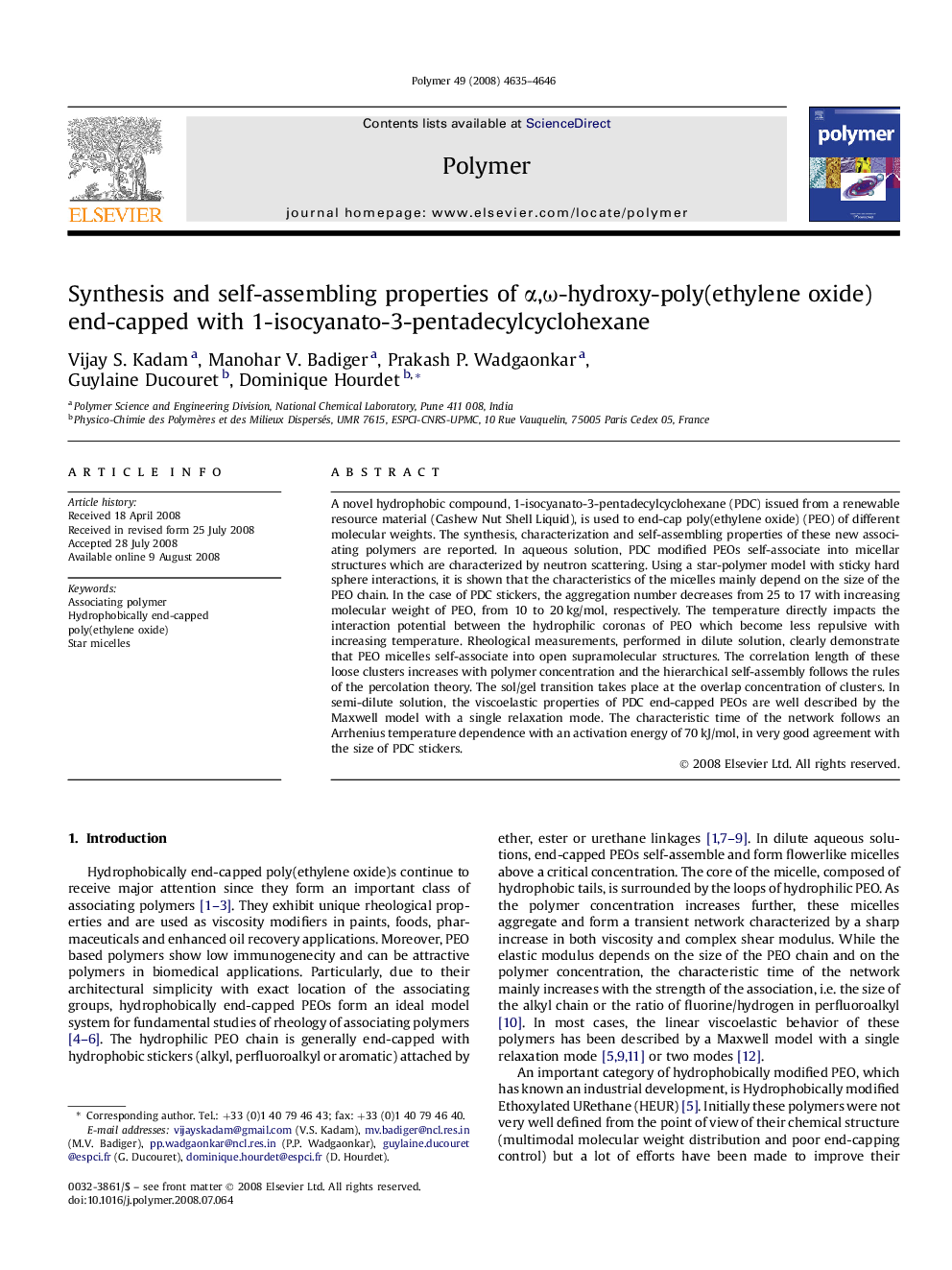| Article ID | Journal | Published Year | Pages | File Type |
|---|---|---|---|---|
| 5186630 | Polymer | 2008 | 12 Pages |
A novel hydrophobic compound, 1-isocyanato-3-pentadecylcyclohexane (PDC) issued from a renewable resource material (Cashew Nut Shell Liquid), is used to end-cap poly(ethylene oxide) (PEO) of different molecular weights. The synthesis, characterization and self-assembling properties of these new associating polymers are reported. In aqueous solution, PDC modified PEOs self-associate into micellar structures which are characterized by neutron scattering. Using a star-polymer model with sticky hard sphere interactions, it is shown that the characteristics of the micelles mainly depend on the size of the PEO chain. In the case of PDC stickers, the aggregation number decreases from 25 to 17 with increasing molecular weight of PEO, from 10 to 20Â kg/mol, respectively. The temperature directly impacts the interaction potential between the hydrophilic coronas of PEO which become less repulsive with increasing temperature. Rheological measurements, performed in dilute solution, clearly demonstrate that PEO micelles self-associate into open supramolecular structures. The correlation length of these loose clusters increases with polymer concentration and the hierarchical self-assembly follows the rules of the percolation theory. The sol/gel transition takes place at the overlap concentration of clusters. In semi-dilute solution, the viscoelastic properties of PDC end-capped PEOs are well described by the Maxwell model with a single relaxation mode. The characteristic time of the network follows an Arrhenius temperature dependence with an activation energy of 70Â kJ/mol, in very good agreement with the size of PDC stickers.
Graphical abstractDownload full-size image
